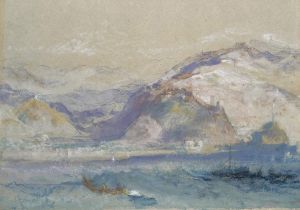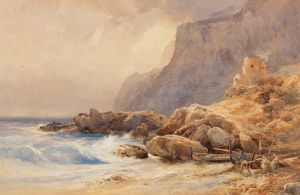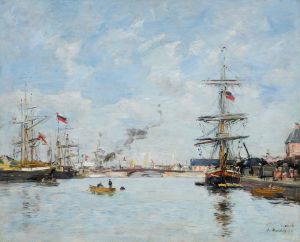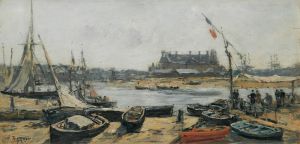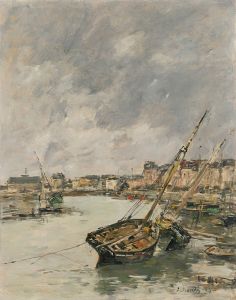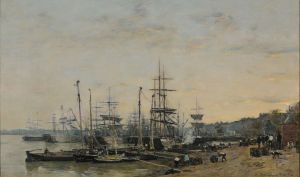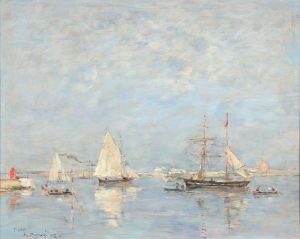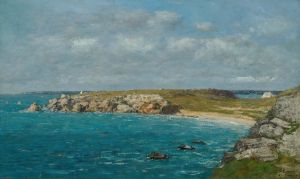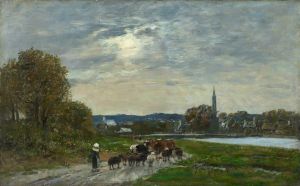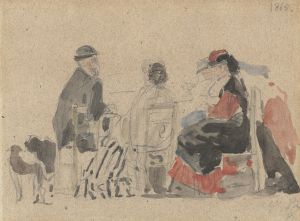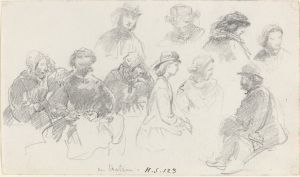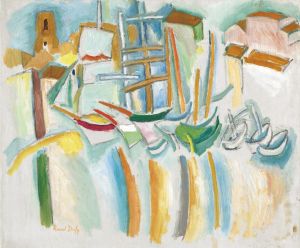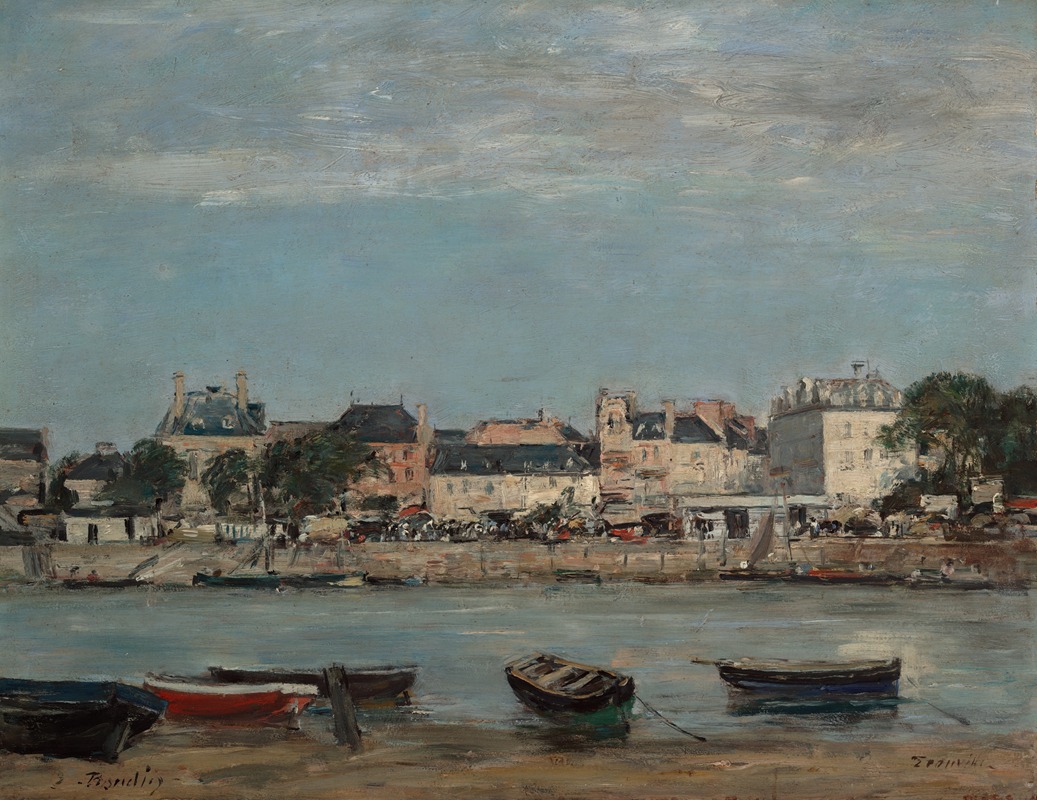
The Port of Trouville
A hand-painted replica of Eugène Boudin’s masterpiece The Port of Trouville, meticulously crafted by professional artists to capture the true essence of the original. Each piece is created with museum-quality canvas and rare mineral pigments, carefully painted by experienced artists with delicate brushstrokes and rich, layered colors to perfectly recreate the texture of the original artwork. Unlike machine-printed reproductions, this hand-painted version brings the painting to life, infused with the artist’s emotions and skill in every stroke. Whether for personal collection or home decoration, it instantly elevates the artistic atmosphere of any space.
Eugène Boudin's painting "The Port of Trouville" is an exemplary work that captures the essence of the bustling port town of Trouville-sur-Mer, located in the Normandy region of France. Boudin, born on July 12, 1824, in Honfleur, is often celebrated as one of the precursors of the Impressionist movement, and his works are renowned for their atmospheric effects and depictions of coastal scenes.
"The Port of Trouville" is a testament to Boudin's skill in portraying the dynamic interplay of light and water, a characteristic feature of his oeuvre. The painting showcases the port of Trouville, a popular destination during the 19th century, known for its vibrant maritime activity and as a fashionable seaside resort. Boudin's choice of subject reflects his deep connection to the Normandy coast, where he spent much of his life observing and painting the changing skies and seas.
Boudin's technique in "The Port of Trouville" involves the use of loose brushwork and a light palette, which effectively captures the transient effects of light and atmosphere. This approach was influential in the development of Impressionism, as it emphasized the importance of capturing a moment in time, a concept that would later be central to the works of artists like Claude Monet, who was notably influenced by Boudin.
The composition of the painting is carefully balanced, with the port's activity depicted in the foreground, including boats, figures, and the bustling life of the harbor. The background features the town's architecture, which is rendered with a sense of immediacy and vibrancy. Boudin's ability to convey the lively atmosphere of the port is enhanced by his attention to the effects of light on the water and the sky, which are depicted with a remarkable sense of realism and vitality.
Boudin's work was well-regarded during his lifetime, and he exhibited regularly at the Paris Salon. His paintings of Trouville and other coastal scenes were appreciated for their ability to evoke the mood and atmosphere of the locations he depicted. "The Port of Trouville" is a fine example of his ability to blend naturalistic detail with an impressionistic approach to light and color.
Today, Eugène Boudin is recognized as a pivotal figure in the transition from the Realist to the Impressionist movement. His works are held in high esteem and are featured in numerous prestigious collections, including the Musée d'Orsay in Paris and the National Gallery of Art in Washington, D.C. "The Port of Trouville" remains a significant piece within his body of work, illustrating his mastery of capturing the essence of the Normandy coast and his influence on the subsequent generation of artists.






